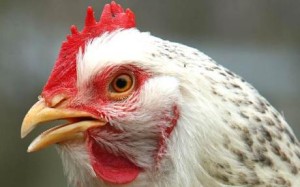Contrary to popular belief, the foodborne pathogen Campylobacter jejuni is not a harmless commensal in chickens but can cause disease in some breeds of poultry according to research published in mBio®, the online open-access journal of the American Society for Microbiology.
 “The main implication is that Campylobacter is not always harmless to chickens. This rather changes our view of the biology of this nasty little bug,” says Paul Wigley of Institute for Infection and Global Health at the University of Liverpool, an author on the study.
“The main implication is that Campylobacter is not always harmless to chickens. This rather changes our view of the biology of this nasty little bug,” says Paul Wigley of Institute for Infection and Global Health at the University of Liverpool, an author on the study.
Campylobacter jejuni is the most frequent cause of foodborne bacterial gastroenteritis in the world and the Centers for Disease Control and Prevention estimate it affects approximately 1.3 million people per year in the United States. Chicken is the most common source of infections. Infection of chickens had previously not been considered to cause disease and the bacteria were thought to be part of the normal microbiota of the birds.
In the study, Wigley and his colleagues experimentally infected birds from four commercial breeds of broiler chickens. They found that while levels of the bacteria in the intestines did not differ by breed, immune response and inflammation did, to the extent that one breed showed damage to the gut mucosa and developed diarrhea.
“Interestingly the breeds did not differ in the levels of bacteria we found in their intestines after infection, even when kept to normal slaughter age,” says Wigley. “This suggests that chicken breed has little direct effect on the risk of Campylobacter entering the food chain but has a big effect on the health of the birds.”
The most important finding, says Wigley, is that Campylobacter infection directly impacts broiler chicken health and welfare. The United States produces over 8 billion broiler chickens per year and the United Kingdom produces nearly a billion. As Campylobacter is common, or even endemic, in these industries then the scale of the impact on animal health is clear to see.
“On the positive side, we now know that chickens produce a robust immune response to infection, which in the longer term may allow us to develop vaccines,” says Wigley.
